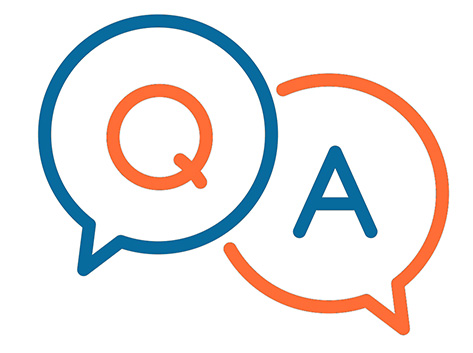
May is Asian American and Pacific Islander (AAPI) Heritage Month. Thirty-eight percent of all AAPI undergraduates in the U.S. attend community college, according to the American Association of Community Colleges (AACC).
Community College Daily asked San Jose City College President Rowena Tomaneng and Portland Community College President Mark Mitsui about AAPI Heritage Month, harmful stereotypes, how community colleges can support AAPI students and more. Tomaneng and Mitsui — who also serve on the board of the National Asian/Pacific Islander Council, an AACC affiliate council — co-answered the questions.
CC Daily: What are some ways colleges can recognize and celebrate AAPI Heritage Month?
Asian American and Pacific Islander Heritage Month is celebrated in May to honor the cultures, traditions and history of Asian Americans and Pacific Islanders in the United States. In 1978, the U.S. Congress selected the month of May because of two important historical anniversaries: the arrival of the first Japanese immigrants in America on May 7, 1843, and the completion of the transcontinental railroad (by many Chinese laborers) on May 10, 1869.
Today, many colleges and universities recognize and celebrate the diversity of the Asian American and Pacific Islander community, which include the experiences and stories of Desi, Filipinx, Korean, Japanese, Cambodia, Hmong, Vietnamese, Hawaiian, Samoan and other groups.
Similar to Black History Month and Latinx Heritage Month, colleges have designed a program of activities and events that connect to a selected annual theme. This year’s theme is “Advancing Leaders Through Purpose-Driven Service,” which focuses on leadership and engagement to advance the Asian American Pacific Islander community. San Jose City College (SJCC) in California, for example, featured two female leaders from the Filipinx and Samoan communities to speak on racial justice issues impacting their respective communities and how education and the arts can disrupt anti-AAPI racism and violence.
In the past, SJCC has also hosted film and documentary screenings, followed by a facilitated dialogue in addition to hosting panel discussions centered on the lived experiences of AAPI faculty, classified Professionals, administrators, and students. Students also enjoy hosting an evening of spoken word/poetry, with well-known poets or open-mic to the student body. We have exhibit space in our library and art gallery that have been used to highlight the diverse cultures and histories of our students and external community.
What are some stereotypes about Asian American and Pacific Islander people that need to be dispelled?
There are many negative stereotypes that have been socially constructed about Asian Americans and Pacific Islanders. These harmful stereotypes perpetuated in mass media include AAPI women being depicted as exotic, hypersexual and submissive. Overseas, entire sex industries revolving around American Army bases in the Philippines, Korea, Thailand and Vietnam compound the objectification and fetishization of AAPI women.
Equally pervasive are the model minority stereotype and the perpetual foreigner stereotype.
The model minority myth posits that all Asian Americans excel academically, particularly in math, and are overrepresented in higher education; are wealthy, or at least never require or accept any form of public assistance; do not experience racism or if we do, don’t complain about it, but seek upward mobility through hard work and staying quiet. In other words, we are the minority that other minorities should try to emulate. It is not only important to note that this stereotype is wrong and inaccurate, but that it is harmful to Asian Americans and other racially minoritized groups.
The model minority myth obscures the historic racism encountered by Asian Americans and the need for resources in the community. The myth also has a long and troubling history in the way that it has been used as a “wedge issue,” particularly against African Americans. Scholars such as Frank Wu and Theodore Wang outline in Beyond the Model Minority Myth: Why Asian Americans Support Affirmative Action how, after the Civil War, southern plantation owners planned to import Chinese workers as a way to depress wages for former Black slaves. Fast forward about a century, and the myth is brought out again during the civil rights era in a New York Times article by William Petersen, titled “Success Story: Japanese American Style,” in which Japanese Americans are cast as the model minority in contrast to other BIPOC communities.
Historically, the model minority myth has been used as an argument against racial equity policies and continues to be used in this way, even today. Key strategies for combating this myth include adding Asian American history to the curriculum, educating professional communities about the historic usage of this stereotype and disaggregating Asian American and Pacific Islander data. If institutions are not disaggregating their data on AAPI subgroups because of the model minority myth, then this results in limited resources and academic/support services to AAPI students who are struggling.
Additionally, the perpetual foreigner stereotype casts Asians as inherently “other,” that no matter how many generations our communities have been in the United States, we continue to be “othered” and characterized as “Un-American.” The perpetual foreigner myth has contributed to the ongoing xenophobia and anti-Asian racism and violence directed to Asian Americans and Pacific Islanders, as in the case of anti-Chinese Immigration Exclusion Laws, anti-Filipino race riots, Japanese Internment during World War II, anti-Sikh violence after the tragedy of September 11, and currently the rise in anti-Asian hate crimes due to Covid-19.
There have been escalating racist attacks against AAPI people recently. How can colleges go beyond statements to better support AAPI students?
Since the start of the pandemic, there have been 6,603 incident reports to the Stop AAPI Hate Reporting Center. Types of discrimination reported include verbal harassment and shunning, physical assault, civil rights violations and online harassment. Many of the incidents have taken place in public streets and parks and in businesses, 64.8% of hate incidents have been directed to women, and 43.7% of hate incidents targeted Chinese individuals, followed by Koreans (16.6%), Filipinx (8.8%) and Vietnamese (8.3%).
With this rise in xenophobia, anti-Asian sentiment and hate crimes in this pandemic year, it is critical that we move beyond statements and take concrete actions to address anti-Asian racism.
Civil rights leader Yuri Kochiyama once said, “Our ultimate objective in learning about anything is to try to create and develop a more just society than we have seen.” We need to pro-actively do anti-bias and anti-racism work on our campuses to better support AAPI students and employees. This means engaging our faculty across disciplines in a review of the curriculum to determine where a multicultural infusion is needed. It also means engaging faculty, classified professionals, administrators and students on both the achievements and struggles that Asian Americans and Pacific Islanders have experienced historically, including deconstructing harmful stereotypes. This can take the form of allocating resources for anti-bias and anti-racism professional development training. We should provide spaces and opportunities for AAPI students to tell their stories, to amplify AAPI student experiences and voices centered on how they are being impacted and ways the institution can better support them. Our students need to know that we care about them and their well-being during this time and we should also be providing them information on mental health resources and other campus resources.
Here are resources that were recently sent out to the SJCC campus:
- President Joseph R. Biden, Jr.’s #AANHPIHM2021 Proclamation
- PBS Asian Pacific American Heritage Month Resources
- Stop AAPI Hate Reporting Center
- Asian American Voices in Poetry, Poetry Foundation
- UCLA Asian American Studies Center
- Smithsonian Asian Pacific American Center
- Pew Research Center Analyses on key facts about Asian Americans and key facts about Asian origin groups in the U.S.
How is NAPIC supporting AAPI community college leaders and students?
Established in April 2006, NAPIC fosters leadership development, engagement and promotion for Asian Pacific Islander Desi American (APIDA) leaders. NAPIC also advocates for policies and programs that improve and enhances APIDA student identity, success and presence in community colleges and in their futures.





